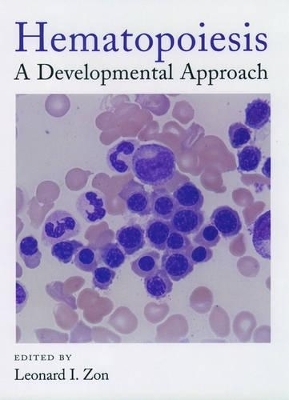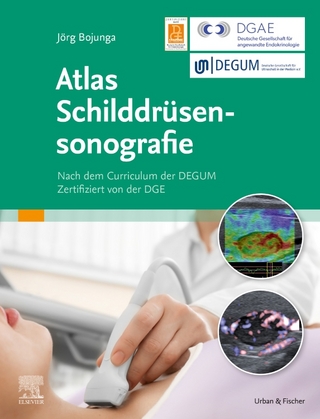
Hematopoiesis
Oxford University Press Inc (Verlag)
978-0-19-512450-7 (ISBN)
Hematopoiesis, or the process of blood formation, has been extensively studied at both basic and clinical levels. Human diseases such as thalassemia, immunodeficiency, and leukemia represent defects in this process. Approaches to treat these disorders have required a basic understanding of the biology of blood cells. For instance, hemapoietic stem cell replacement or bone marrow transplantation has been used to ameliorate disease. This volume focuses on hematopoiesis at a cellular and molecular level, and establishes the basis for clinical manipulation of hematopoietic cells for therapeutic benefit. In Part I, the cellular characteristics of progenitors and stem cells are explored. Emphasis is placed on purification of stem cells and both in vitro and in vivo assays. The regulation of normal and leukemis stem cells is illustrated. An excellent discussion of potential use of these cells for gene therapy concludes this section. Hemapoiesis is easily studied during embryogenesis. Part II develops the concept of the waves of hemapoiesis during development. Comparative hematology is making a major comeback as a field in the 1990's. One hope is that general principles of hematopoiesis will be established by studying many models and systems. Part III delves into critical factors that regulate hematopoiesis, including both intracellular and extracellular signals. Part IV and V describe lineage programs for myeloid and lymphoid lineages. These chapters are meant to be illustrative of the different cell fates, but are not exhaustive. Part VI examines the genetics of hematopoisis, particularly in animal models. The hematopoietic system is in constant contact with stromal cells and endothelial cells during development and in the adult. Evidence suggests that endothelial cells and blood cells may arise from a common progenitor, the hemangioblast. Part VII and VIII discuss the stromal and endothelial cells with the emphasis on their interaction with hematopoietic cells.
PART I HEMATOPOIETIC PROGENITORS & STEM CELLS ; 1. Nature of Hematopoietic Development as Deducible from Clonal Cultures ; 2. Stem Cells and Hematolymphoid Development ; 3. Stem Cell Populations and Purification ; 4. Subtractive Approach to Cloning Genes that Regulate Hematopoiesis ; 5. Lineage Commitment and Self-Renewal of Blood Stem Cells ; 6. Blast Cell Colony Assays ; 7. Quantitative Studies of Normal and Leukemic Stem Cells: Definition and Regulation ; 8. Normal and Leukemic Stem Cells Assayed in Immune-Deficient ; 9. Ex Vivo Expansion of Hematopoietic Stem Cells ; 10. Hematopoietic Stem Cell Gene Therapy: Progress and Prospects ; PART II EARLY EMBRYOLOGY AND ONTOGENY ; 11. Zebrafish Hematopoietic Development ; 12. Blood Formation During Xenopus Embryogenesis ; 13. Embryonic Induction of Mammalian Hematopoiesis and Vasculogenesis ; 14. Developmental Relationships of Hematopoietic Stem Cells and Endothelial Cells ; 15. Ventral (Yolk Sac) Hematopoiesis in the Mouse ; 16. Dorsal Hematopoiesis in Fish and Amphibians ; 17. Non-Yolk Sac Hematopoietic Stem Cells: The Avian Paradigm ; 18. Hematopoietic Stem Cell Development in Mammals ; 19. Changes in Lymphoid Progenitor Populations During Mammalian Development ; 20. Use of Embyronic Stem Cell In Vitro Differentiation in a Serum-Free Environment for Analysis of Mesoderm Formation and Hematopoietic Development ; 21. Drosophila Hematopoiesis ; PART III IMPORTANT FACTORS IN HEMATOPOIESIS ; 22. Regulation of Myelopoiesis as Assessed by Gene Deletion and Gene Transduction ; 23. Hematopoietic Signal Transduction ; 24. Jak-STAT Signal Transduction ; 25. Regulation of Erythropoietin Production: Molecular Mechanisms of Oxygen Homeostasis ; 26. Involvement of Activins and TGFBs in Hematopoiesis ; 27. Wnts and Hematopoiesis ; 28. Notch Signaling During Development ; 29. VLA/B1 Integrins in Hematopoiesis ; 30. Chemokines ; 31. Fetal Growth Factor and Hematopoiesis ; 32. Transcriptional Control During Erythroid and Megakaryocytic Development ; 33. Transcription Factors that Induce Commitment of Multipotent Hematopoietic Progenitors: Lessons from the MEP System ; 34. Regulatory Interactions between Transcription Factors and Their Role in Hematopoietic Lineage Determination ; 35. Nuclear Receptors in Hematopoietic Development: Cooperation with Growth Factor Receptors in Regulation of Proliferation and Differentiation ; 36. Ets Transcription Factor Mutations and Hematopoiesis ; 37. Homeobox Genes and the Regulation of Hematopoiesis ; PART IV MYELOID BIOLOGY ; 38. Myeloid Transcription Factors and Development ; 39. Megakaryocyte Signaling ; 40. Transcription Factors Active in Megakaryocytic Development ; 41. The Role of Myeloproliferative Leukemia in Megakaryopoiesis ; 42. Mast Cell and Basophil Development ; 43. The Role of Osteoblasts in Hematopoietic Stem Cell Biology ; PART V LYMPHOID BIOLOGY ; 44. Role of Ikaros Proteins in Lymphocyte Development and Function ; 45. Transcriptional Regulation of T Cell Development and Activation ; 46. Signal Tranduction in Thymic Development ; 47. Lineage Commitment of CD4 T Helper Lymphocytes ; 48. B-Cell Development and Maturation ; 49. Development of the Recombinase System ; 50. The Phylogenetic Development of the Cells that Express and Mechanisms that Diversify Immunoglobulins and T-cell Antigen Receptors ; PART VII GENETICS OF BLOOD FORMATION DURING DEVELOPMENT ; 51. Zebrafish Hematopoietic Mutants ; 52. Spontaneous and Targeted Mutations in Erythrocyte Membrane Skeleton Genes: Mouse Models of Hereditary Spherocytosis ; 53. Human Bone Marro Failure Syndromes ; 54. Globin Switching and Developmental Changes in Erythropoietic Sites and Red Blood Cell Populations of Non-Mammalian Vertebrates ; 55. Globin Switching ; 56. Dominant White Spotting and Steel Mutants in Hematopoiesis ; 57. Genomics and Developmental Biology ; 58. Acute Leukemia: A Disease of Disordered Cell Fate Determination ; PART VII STROMA ; 59. The Microenvironmental Cell Populations Essential for the Support of Hematopoietic Stem Cells ; 60. The Mediators Involved in the Control of Hematopoiesis by the Microenvironment ; 61. Development of Stromal Cells ; 62. Mouse Genetics for the Analysis of Stem Cell Behavior ; PART VIII VASCULOGENESIS ; 63. Receptor Tyrosine Kinases in Endothelial and Hematopoietic Cell Development ; 64. Vascular Endothelial Growth Factor Receptors in Vascular Development and Hematopoiesis ; 65. Regulation of Hematopoiesis by Bone Marrow Microvascular Endothelium ; 66. Vascular Matrix and Disorders ; 67. Vasculogenesis ; 68. The Angiopoietins and How They Act Coordinately with Vascular Endothelial Growth Factors During Normal and Pathologic Angiogenesis ; INDEX
| Erscheint lt. Verlag | 31.5.2001 |
|---|---|
| Zusatzinfo | 24pp colour plates, numerous line figures and black and white photographs |
| Verlagsort | New York |
| Sprache | englisch |
| Maße | 274 x 213 mm |
| Gewicht | 2282 g |
| Themenwelt | Medizinische Fachgebiete ► Innere Medizin ► Endokrinologie |
| Medizinische Fachgebiete ► Innere Medizin ► Hämatologie | |
| Studium ► 1. Studienabschnitt (Vorklinik) ► Physiologie | |
| Studium ► Querschnittsbereiche ► Infektiologie / Immunologie | |
| ISBN-10 | 0-19-512450-2 / 0195124502 |
| ISBN-13 | 978-0-19-512450-7 / 9780195124507 |
| Zustand | Neuware |
| Haben Sie eine Frage zum Produkt? |
aus dem Bereich


